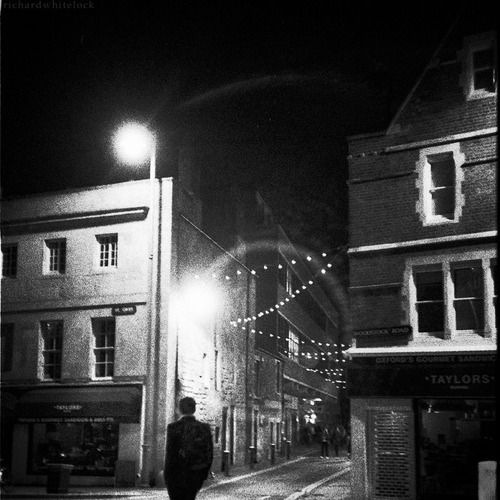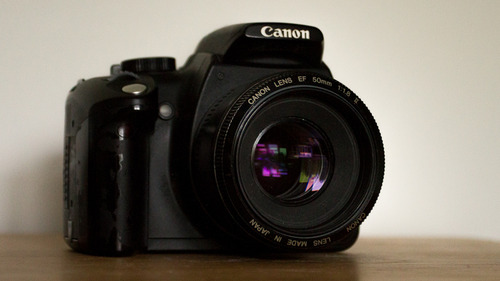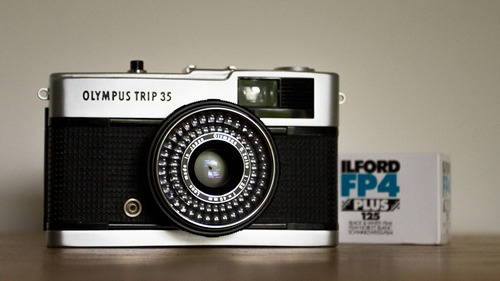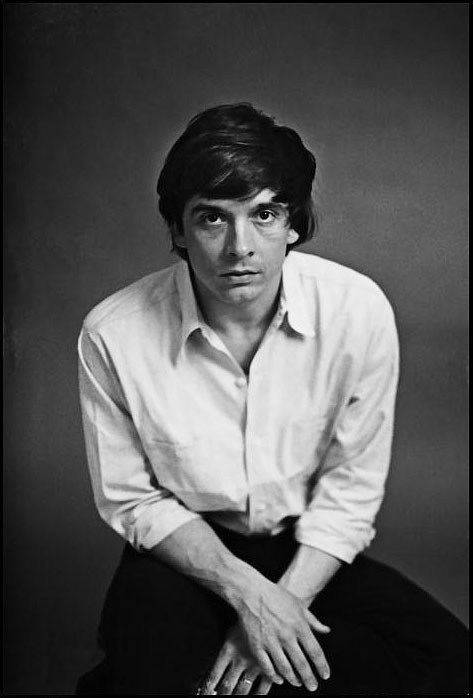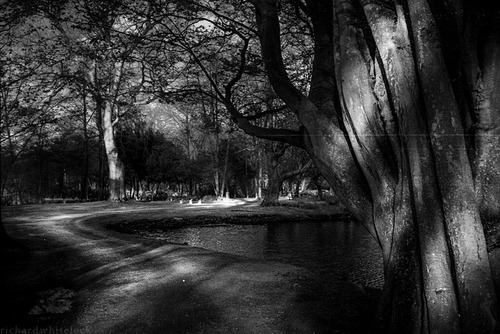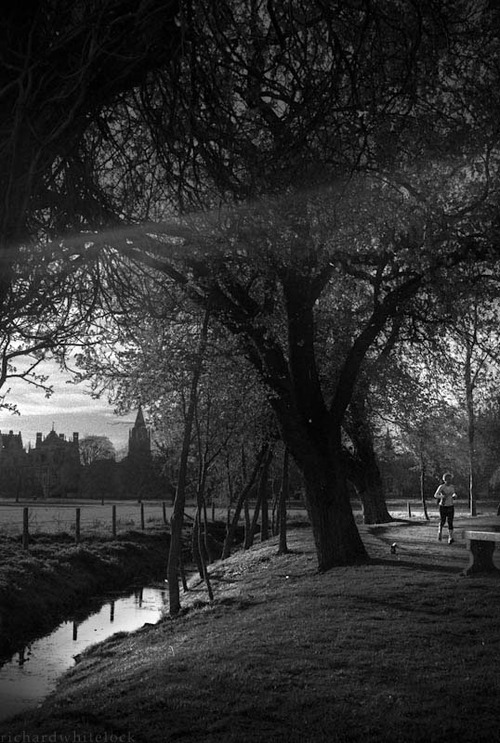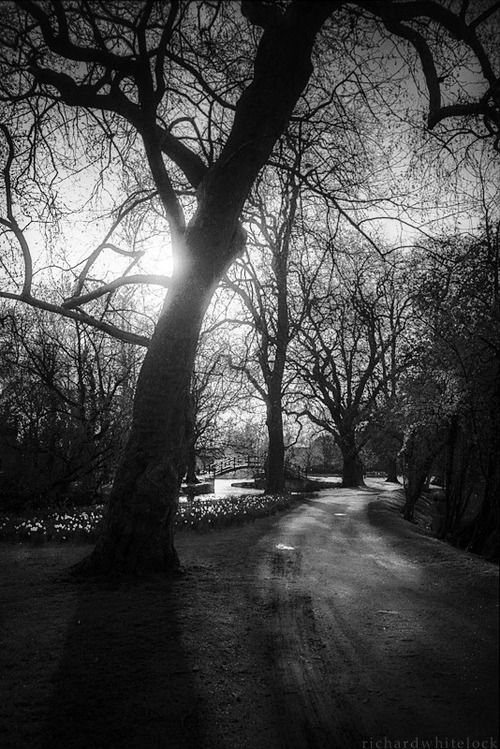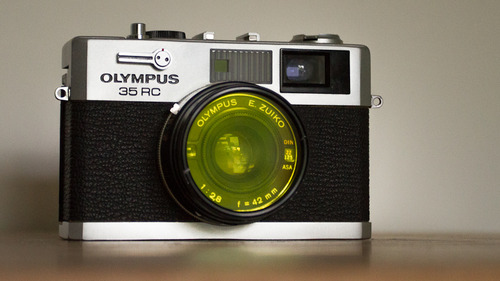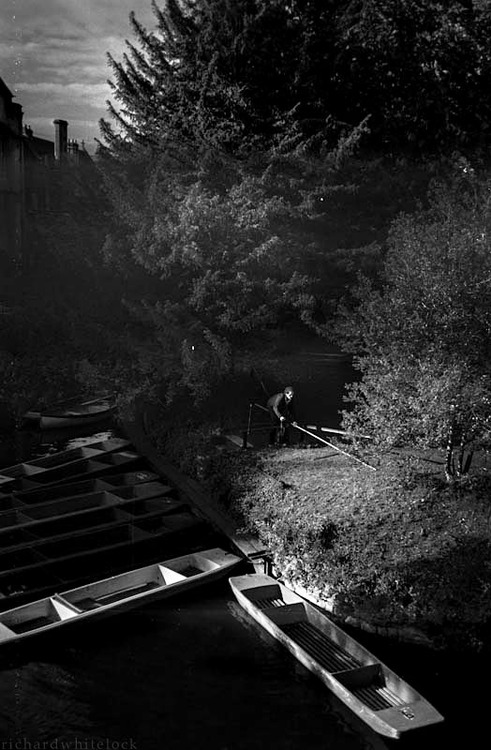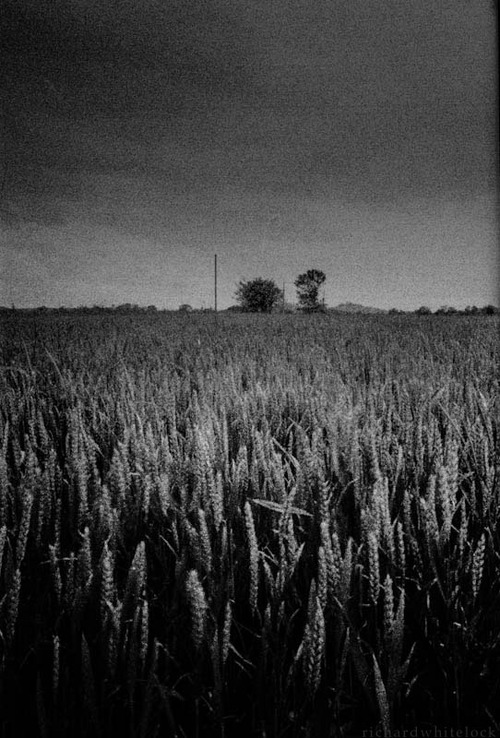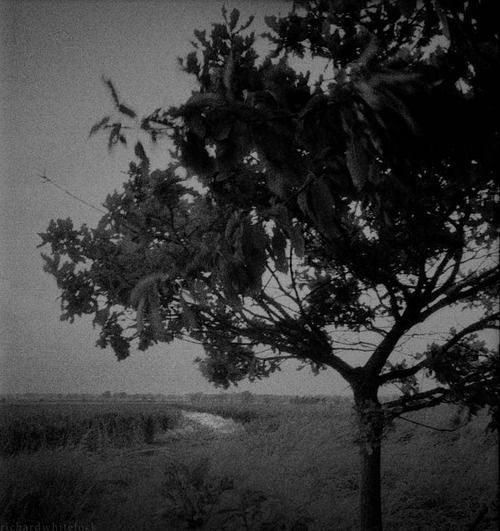Delayed gratification, dust, scratches, the tedium of scanning and subjective chemistry.
All while investigating film and cheaper rangefinders.
Temporarily given a break: my Canon 350d. The viewfinder of which gives the impression of peering down a dark tunnel to a distant frame. This isn't necessarily a bad thing, a little distance can aid composition. Quite different to the open viewfinder of the following cameras.
Long neglected in my cupboard, from a Grandparent: a now amateurishly cleaned Olympus Trip 35 with a roll of the very forgiving Ilford FP4 Plus 35mm film. Zone focussing, a manual aperture ring and only 1/40s shutter. Restrictions and delayed results can concentrate the mind on associating lighting conditions and intended results with appropriate exposure values. (What is the Trip 35 actually doing?)
A good scan of monochrome film can give the same latitude for post processing as a digital RAW. The highlights are particularly well gradated and forgiving on Ilford FP4 plus. As digital pushes towards overexposure, you lose a channel of colour at a time as they each burn out. Digital lowers in tonality and resolution as you edge off the data cliff. This difference is very noticeable on light sources in night shots. As if to compensate, digital is the superior when rendering the shadows and handling low light in general. A hard choice but it is not zero sum.
Grain in film photography is often compared to noise from an over-gained digital sensor. This is a flawed analogy. Grain is the very medium being recorded to and the result of the chemical experiments performed afterwards.
Spend an age processing out scratches, light leaks, vignettes and borders? Or just leave them in?
